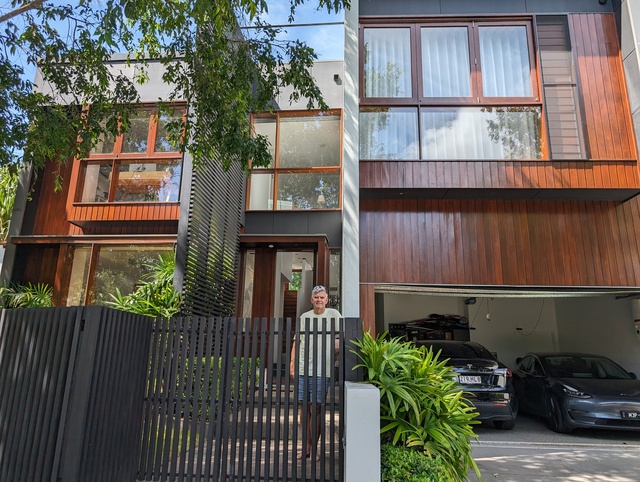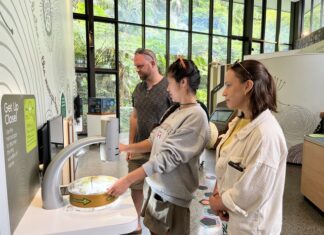It was a 15-minute intense hailstorm that started Mark Purcell on his Electrify Everything journey.
In January 2020 a severe storm with golf ball sized hailstones swept through Canberra, damaging 44,500 cars. Mark’s car was one of them.
Faced with having to buy a new car, Mark’s priority was technology, and the Tesla met this criterion with features not seen in other cars in the same price range. The fact that it was electric, cost less to run, and was kinder on the environment weren’t really on his radar at this stage.
Once Mark had his new Tesla, he realised that it would make sense to install household solar to charge the car. The panels started to save the family across their electricity needs. Then after a $4000 gas bill over winter the family decided to also replace all their gas appliances to take advantage of both the renewable electricity and a government rebate for discontinuing gas. This included replacing their gas heater with split system air conditioning, their gas stove with an induction cooktop, and their gas hot water with a heat pump hot water system.
Immediately, they began to see significant savings on their energy bills.
Then came the family’s move to Noosa so they decided to take on the electrify everything challenge for a second time. But this time was much easier as Mark had learnt from doing the first time around. Although there were still obstacles. For instance, it took six months to find a tradie that was familiar with heat pump technology and could install it for him.
The first step in their new Noosa home was to extend the modest roof solar system to increase its capacity, and this time Mark added a battery to his home. This stores energy generated during the day and Mark sells it back to the grid when the energy wholesale price is at it’s peak.
He has also set up a home automation system, monitored over his phone, to optimise the most cost-effective times for using energy for his car, pool pump etc. Most quarters they actually earn money on their electricity bill. As in their previous home, they have replaced all the gas appliances.
Mark knows everyone’s experience and ability to make the big switch to electrifying everything will be different. One of the first steps might be to have a look at ZEN’s online Rewiring Noosa toolkit (zeroemissionsnoosa.com.au/rewiring-noosa) After that, Mark believes that the biggest bang for the buck is definitely solar panels. That’s an early win that will pay itself off in 2 -3 years. Heat pumps can also lead to big savings. Many of us aren’t aware that hot water can be half of the energy consumption in a household.
But also people can initially look to replace appliances at the end of their life. As Mark says, “When your car is going, think about alternatives like an electric car…when you’re redoing your hot water system look for electric alternatives.”
Starting as a novice a couple of years ago, Mark is now a true convert. He’s been net carbon zero for the last two years. As deputy chair for Zero Emissions Noosa (ZEN), he often talks to community groups about his experience and how others can also save money and do their bit for climate change through electrification. He hopes to contribute to Rewiring Noosa.
ZEN also promotes energy efficiency options for renters and strata residents. To learn more, visit
zeroemissionsnoosa.com.au or noosaevexpo.com.au







